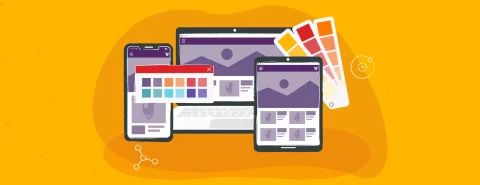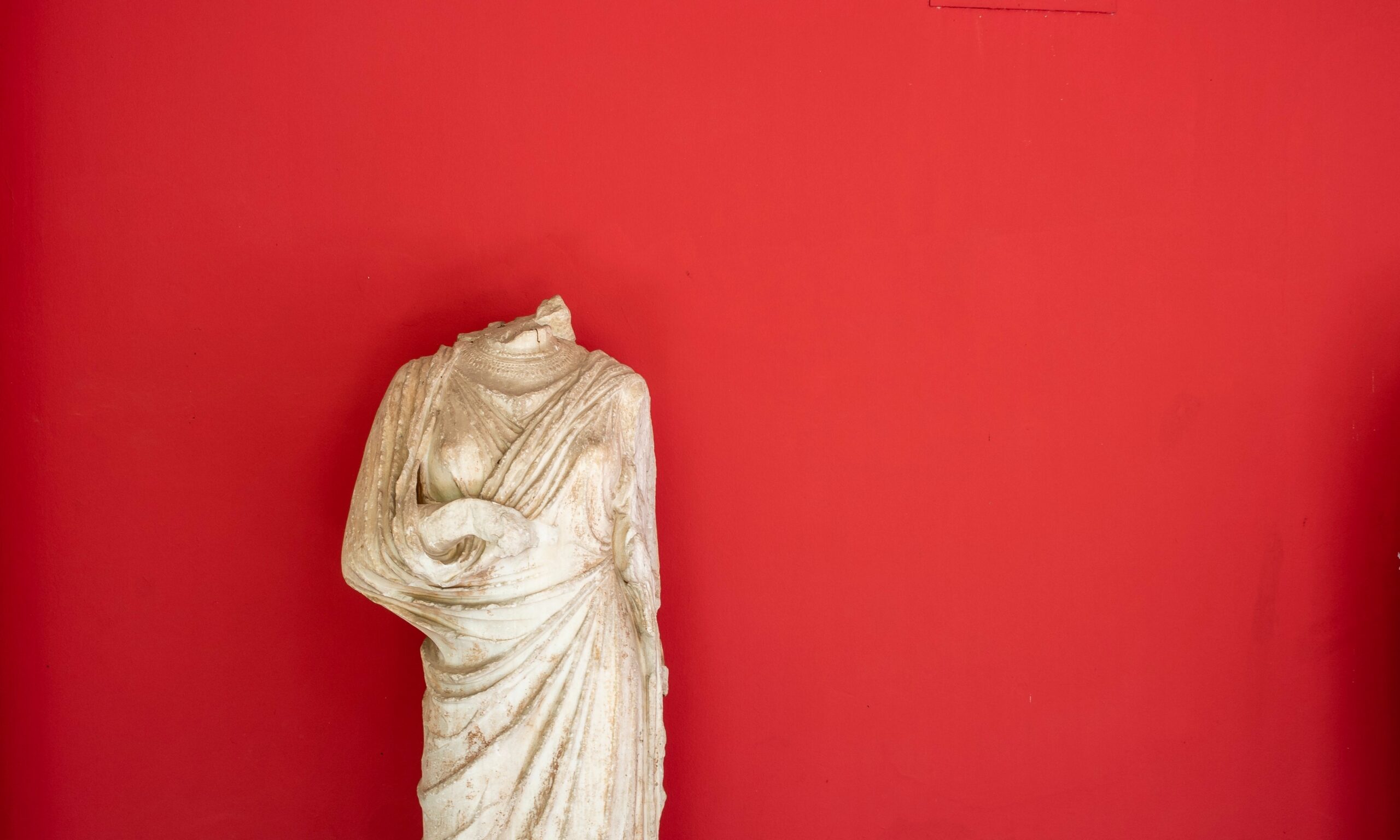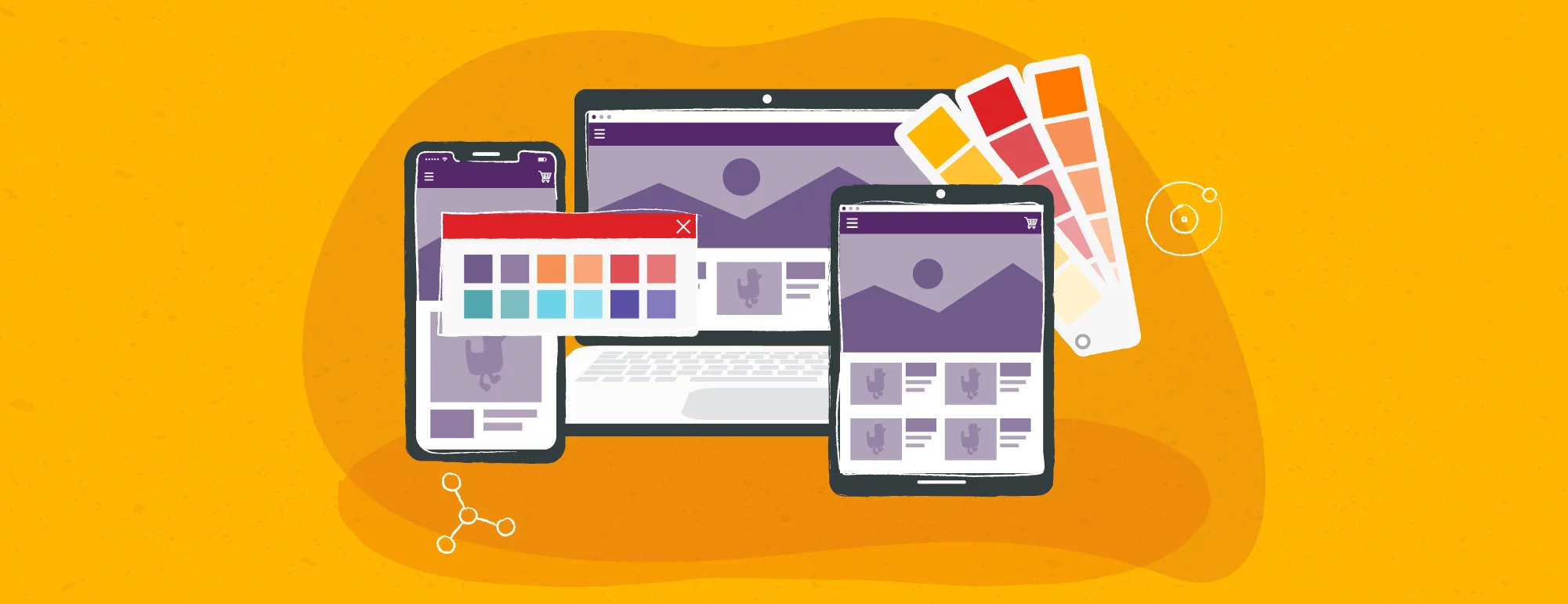What Is Worth Knowing About Headless CMS
It is said that Headless CMS is a term aimed more at programmers, arguing that users entering content on a blog or operating an online store need to make few choices in regards technology or how to program the site. This is not true. The choice of system is very important in the context of changing trends in the presentation of content, the increasing number of communication channels with the customer and the expected performance of solutions.
In this article you will learn:
- What is headless?
- What is the difference between “traditional” CMS and Headless CMS?
- What are the pros and cons of Headless CMS?
- Which Headless CMS solutions should be considered when building a new website?
Headless, how to crack it?
The headless approach appeared in the IT world a few years ago, but it has only recently become popular in programming circles. According to the terminology, headless software is one that has no graphical interface. The part of “Head” that we get rid of is the outer layer of the presentation, i.e. the frontend. There remains a backend that serves as a place to store information. In such software, communication between the visual part and the interior of the system takes place via the API.
It can currently be found in content management systems (Headless CMS), in online stores (Headless e-commerce), and even in browsers such as Headless Chrome or Chromium, which can be used using commands entered on the command line.
How is CMS different from Headless CMS?
A “traditional” CMS, such as WordPress, consists of:
- a database in which the content is stored.
- an administrative panel for content management.
- a visual layer, which presents information from a database using frontend technologies.
- a page rendering engine that combines the above three elements together.
CMSs have a specific technology group that developers can use to prepare the frontend. Content created in them can be used in other systems only after adding plugins – ready or dedicated. Combining a CMS with systems used in the company, e.g. e-commerce or existing product database, is also problematic.
Headless CMS (otherwise known as Decoupled CMS) solutions lack one component – the visual layer. They only consists of:
- a database.
- an admin panel.
- API.
The key function is to store and deliver content to various places. Due to the fact that there is no specific visual layer, developers have the freedom to choose frontend technologies, and the prepared content can be presented on various devices, such as telephones, tablets or TV sets. OIt can even be used with digital kiosks, such the self-service checkouts in the McDonald’s network, for example.
Advantages of Headless CMS
The use of a Headless CMS has many advantages.
Flexibility in the choice of frontend technologies.
Most ready-made CMS impose some restrictions on the technologies used to build components. Headless solutions do not have this problem. Specialists preparing the visual layer have significantly more freedom. This is a very important aspect, because not every channel used in the organization is based on one technology, whilesome of the modern functionalities use specific languages that cannot be exchanged for another. Flexibility in the choice of technology additionally allows the use of the latest frameworks, thanks to which our website is modern and visually more attractive.
Use of content on many devices.
The Headend CMS backend layer focuses mainly on data storage. The content entered into the administration panel can be presented on many devices and on many systems. For example, the same product information can be found in an article on a blog, on a product page in an online store and in a mobile application. Content management in one place enables quick updates across various channels, alongside the ability to add new device with the same information as in other systems.
Faster system operation.
In Headless CMS, we can use the browser’s memory to implement some functions and execute scripts. Thanks to this, we can reduce the number of queries to the database and prepare a visual layer to top up content on the page.
Independence between content management and changes in the system’s appearance.
Changes to the content made by content managers do not affect the appearance of the page. Their work can take place regardless of the visual layer. This is very important for new projects built from scratch. In this approach, after preparing the backend, together with the administrative panel, content can be entered at an early stage of website preparation. The same applies to functional improvements. Content managers can do their job even during frontend changes.
Increased information security.
Last but not least, one of the most important aspects of the headless approach is its ability to increase security over stored information. In Headless CMS systems, thanks to “cutting off” the front part, we get rid of the influence of application and plug-in developers on our site. In addition, the frontend part is most often embedded on a different server than the backend one, which increases data protection.
Disadvantages of Headless CMS
Headless CMS also have their limitations.
Less flexibility for content managers.
In systems based on Headless CMS, only the most necessary functionalities are typically prepared. Not all elements existing in a traditional CMS are restored. Content managers are therefore dependent on prepared components. They are not able to create the appearance of the pages themselves – the content added in the administrative panel is presented on the page in a certain way. It can be a barrier for companies that prepare different campaigns for their products, and each creative is custom.
Headless CMS works well for websites for which we have specific presentation templates, e.g. fixed product page layout in an online store or how news is displayed on a website. Depending on how the components are prepared, content managers may have problems with independent previews of prepared content and with introducing changes in styles.
Higher site preparation costs.
Headless CMS has no visual layer in its structure, which means that you have to write it from scratch. It can be a more labor-consuming and more expensive solution compared to the ready-made elements of traditional CMS. The system preparation costs will also be associated with the selected technology. In addition, the project team will have to struggle to correct errors in the visual layer. They will not be able to turn to the developer of the base software in this regard.
Which Headless CMS solution is worth paying attention to?
There are quite a few Headless CMS solutions on the market. The key question is: which one is best for our company? The Headless CMS ranking from G2 puts Contentful first.
Contentful
This solution has an API that allows developers to manage, integrate and deliver content to various types of clients, devices and platforms. It has a micro-service structure, which means that its architecture is dispersed, so the failure of one element does not affect the operation of the entire site, only its part.
Of the more interesting features that Contentful currently has, it’s worth paying attention to:
- Multilingualism – the ability to prepare content in different languages
- An extensive text editor (rich text interface) – an application that allows you to prepare content, as well as embed locations, dates and image files
- Roles and permissions – 4 key roles are implemented: Administrator, Editor, Author and Translator.
The price of a monthly subscription for a Contentful license depends on the package selected and the number of users. There are three tariffs to choose from:
- Developers – for organizations with one page, which is prepared in up to two languages and has only one role
- Business – a space to work with many applications and many languages, with 4 roles in the administrative panel
- Enterprises – a dedicated offer for companies that need more than found in the Developers or Business packages
Contentful’s clients are large companies such as Spotify, The British Museum and Heineken.
Kentico Kontent
Another headless CMS we’ve analyzed is Kentico Kontent, which focuses on the entire content creation process. The solution is prepared through a module for building flows that will allow you to monitor work and content status. We can develop our own workflow for opinions, for instance, starting from the draft, moving to marketing reviews and ending with the consent of the legal department and publication on the site.
Content in Kentico Kontent can be described using taxonomy and graphic materials, videos and documents can be ordered in a repository (DAM – Digital Asset Management) prepared in the system. Prepared pages can be easily and quickly checked via preview – without publication.
The product portfolio also includes a number of integrations with currently popular applications and frameworks, such as Google Analytics, Google Docs, Magento or Nuxt.js.
The monthly subscription depends on one of the selected packages:
- Starter – for simple projects with a maximum of 20 users (3 users in the base package), up to 2 languages and 5,000 elements
- Business – for growing companieswith a maximum of 30 users (15 users at base level), 2 dedicated roles and 10 languages, with up to 25,000 items
- Enterprise – a dedicated offer for companies that need more than found in Starter or Business packages
Customers using Kentico Kontent include PPG Paints, University of Oxford and Czech Vouge.
Strapi
The latest Headless CMS we are analyzing is the open source Strapi. This is a dynamically developing French project that has several interesting features needed for content management, including:
- An extensive text editor – allows you to prepare various types of content, including text, graphics and quotes
- Adjusting the layout via drag and drop
- A wide selection of ready-made validation fields for use in system components, such as email, passwords or media (e.g. graphics, video, PDF)
The plans of Strapi’s developers include the functionality of role and permission management, content management in different languages, content publication flow and menu management.
Due to the fact that it is an open source project, a strong community is created around Strapi, which is involved in preparing new functionalities and testing existing ones. The use of Strapi is free and project teams building projects based on it extend it with further functions. It has already been used by, among others, French bank Societe Generale.
How to choose Headless with your head?
Headless CMS has many advantages. It is a great solution for organizations that have a structured information presentation, know what they want to show on the web and want to promote their products and content on different devices, as well as in many channels.
It is also worth remembering the difficulties that are associated with the choice of such a solution – less flexibility for people filling the content of the page and higher costs of production. When choosing a CMS, it’s worth looking into the future and observing trends. Headless CMS does not close itself off to technologies, so it is easier to adapt the appearance of content to current standards.
This is not a solution for every business so, if you are wondering if you could use Headless CMS in working with your product, please contact us. Perhaps this will be the next step for your company to succeed on the web.








